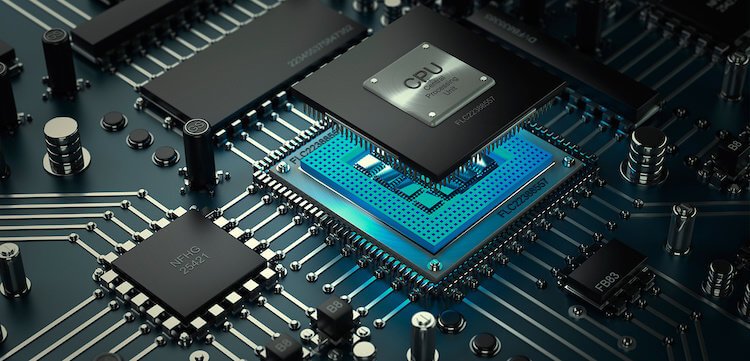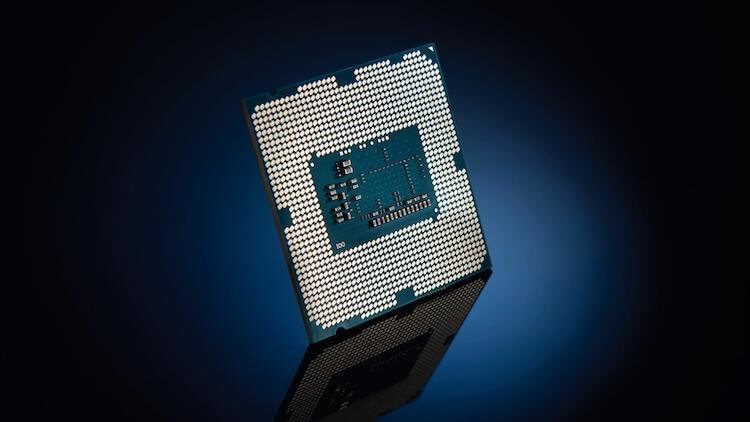Now everyone is running around like crazy and shouting that the new processor will work on a 7nm process technology, and another one on 5nm, and Samsung is generally working on 3nm. All this is good and manufacturers love to show potential buyers everything in the form of very simple numbers. If they are better than last time, then everything is fine and the gadget is good. If they are the same, then “wow, nothing has changed.” Often this is not entirely true, and we fall into the trap of unnecessary numbers imposed on us by manufacturers. We have already talked about cameras, and now let's talk about processors and understand whether we need to delve into what the process technology is at all, or let the engineers do it.

The chips of modern devices are extremely complex.
Where processors are used
We are surrounded by gadgets! They are everywhere and no longer just surrounded us, but literally took us hostage – we cannot live without them. Each of them has a processor. Sometimes everything is limited only to him and other chips are already made with him “in one bottle”. Sometimes such elements as a video card or something like that are separately taken out, but any computing element consists of a huge number of transistors.
When a new smartphone, computer, laptop or something like that comes out, the manufacturer indicates mysterious nanometers, the number of which decreases every year and this is considered a good sign and a sign of manufacturability. This is probably the only indicator, a decrease in which is good.
These very nanometers are called a technological process, or abbreviated as a technical process. What is it?
What is a technical process
The vast majority of users have never seen a processor, except in the pictures. Some people were lucky enough to see him live, but no more than his heat distribution panel. By comparison, it's like meeting a girl, but seeing her only in a ski suit. The most interesting thing is under this plate. This is where the magic of productivity begins.
The processor crystal is located under the plate. It consists of billions of not even miniature, but microscopic transistors, the distance between them is determined by the technical process.

Usually we see only the processor cover, and under it is always the most interesting.
The most modern processors (of those that have entered industrial production) now have a 7nm (7nm) process technology. At the moment, the Taiwanese company TSMC has mastered such technologies quite well, which produces chipsets for the world's largest manufacturers, such as Apple, Huawei and Qualcomm. The latter provides the lion's share of processors for manufacturers of completely different smartphones at Android.
At the same time, it should be noted that a greater value of the technical process does not mean that there will be fewer transistors on the chip. This was proved by her example Intel, which is not very good with the 7 nanometer technology yet.
Is the technical process important when choosing a phone
Every year the process technology is getting smaller and smaller. Now it is 7 nanometers, in the coming months we will see processors with 5 nanometers, but not far off and 4 nanometers. Samsung, according to rumors, is going to cook 3 nanometers at once.
The advantage of lower values, which manufacturers are so chasing, investing billions of dollars in it, is quite obvious. The smaller the technical process, the more productive and economical the processor will be. Due to the smaller distance between transistors, data between them is transferred faster, and less energy is spent on it. These are the main advantages.

Not all companies can keep up with progress. Intel, for example, has not yet been able to properly launch the production of 7nm processors.
Even with the same architecture, but with a decrease in the technical process, we get an increase in performance, an increase in the number of cores, a decrease in production costs, allocation of more space for memory and other components, since the die as a whole becomes more compact. There are other more specific advantages that we will not dwell on now.
What is the technical process
At the dawn of computer engineering, it was simply not necessary to talk about such quantities as it is now, and the processors of that time had a technical process measured in micrometers (they are also microns). This is one thousandth of a millimeter. Even now it is difficult to imagine it, but then it was completely fantastic.
Gradually, the rate of decrease in the technical process increased and from values in the region of 10 microns in the seventies manufacturers came to values of 0.6 microns in 1994. In 1997, counting began in nanometers. This is one millionth of a millimeter. The first processors with this process technology had values in the region of 350 nm.
At the beginning of the 2000s, the value dropped below 100 nm, which was a breakthrough and a psychological mark, but it did not stop there either. So in 2006 AMD Phenom II, Athlon II and others have already offered 40-45 nm. The next two-fold increase in transistor density occurred in 2012.
In 2016, there were already 14-16 nm, and in 2017 Apple, Qualcomm and some other companies crossed the 10 nm line. That is, ten millionths of a millimeter. Just imagine this value!

Someday it will come down to two nanometers.
Should you pay attention to the processor when buying a phone?
Now the technical process of modern processors has reached the 7 nanometer mark. This is a good indicator and the next step will be 5 nanometers, but you should not dwell on this. The processor has many other parameters, and you will hardly notice such a small change in the technical process.
It is much more important to look at other indicators of a smartphone, and these extra 2-3 nanometers at this stage will give you an advantage only if you believe that it really is. A smartphone is a tricky thing and there are plenty of other things that affect performance.
For example, the load of third-party applications, memory speed, architecture, demanding applications with which you work, and much more. In its pure form, the processor will be faster and more economical. Of course, if we compare 40-nm and 5-nm technical processes, there will be a difference, but several years have passed between these indicators. There will be no such difference in performance between models released within a year.
